The Texas Revolution is significant in the history of Nacogdcohes because citizens of Nacogdoches served in the Texan Army and signed the Texas Declaration of Indpendence. To view or print a brochure about the Texas Revolution in Nacogdoches, please click the following link Texas Revolution in Nacogdoches, or for more information, please continue reading.
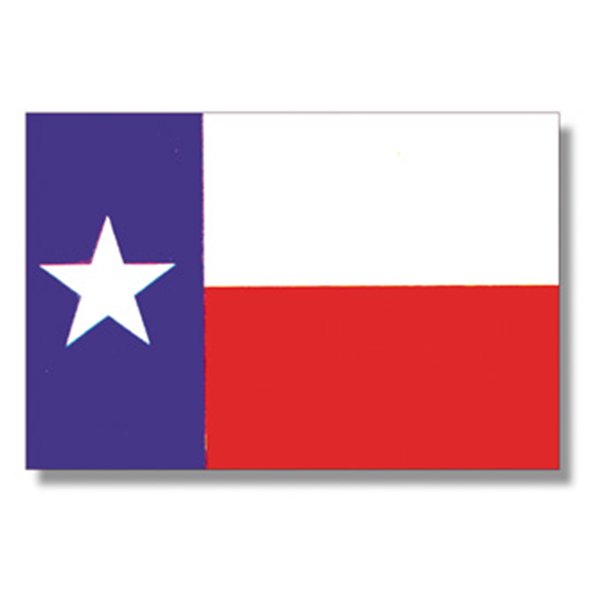
Texas State Flag
The large number of Americans entering Texas, either with the sponsorship of an empressario or illegally, began to worry the Mexican government who noticed that settlers were not taking their oaths of allegiance and agreements with the government seriously.[1] Haden Edwards, an empressario with eight hundred land grants around Nacogdoches, embodied many of the government's fears.[2] Edwards seemed to misunderstand the conditions of his contract, which included honoring all preexisting land grants, organizing a militia, and forming a land commission to award land titles after one hundred families were settled. [3] Instead he believed that he had absolute control over all of the land within his grant, that all of the settlers on that land had to have valid land titles, and that those who did not had to arrange for them on his terms, and if they did not, he could order them off of the land.[4] To determine which of his lands were occupied and which were available, Edwards posted a notice on the Old Stone House in Nacogdoches that required the holders of Mexican and Spanish land grants to prove their ownership. Due to a lack in record keeping and the fact that if there were records, they would likely be held in either Madrid, Spain or Mexico City, many of the landholders were unable to prove their ownership. In spite of his threats, Edwards only reclaimed one property, but the threat he posed to Mexican landholders was noted.
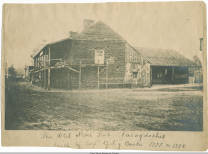
The Stone Fort
The Fredonian Rebellion
Another reason some Nacogdoches citizens disliked Haden Edwards was his meddling in Nacogdoches's politics. In December of 1825, Samuel Norris and Chinchester Chaplin ran for alcalde, or mayor of Nacogdoches.[5] Norris was a favorite of the old settlers, while Chaplin was the son-in-law of Edwards and the favorite of more recent settlers. Edwards declared that Chinchester Chaplin was the winner, much to the disdain of many citizens, who complained to the Mexican government.[6]
After hearing so many complaints about both Haden and his brother Benjamin, who acted as manager of their grant, the Mexican government revoked the Edwards brothers' grant and divided it between other empressarios in the area.[7] The revocation of their land grant infuriated the brothers, not only because they had money tied up in the grant, but also because if they lost their claim, then all of the settlers they had sponsored would lose their land as well.[8] The Edwards brothers determined that the only way to get their land back would be to break away from the Mexican government and establish their own republic.[9]
The Edwards brothers had the support of their settlers and made an agreement with some of the local Cherokee tribes who felt that they had also been treated unfairly by the Mexican government.[10] The brothers created the Fredonian flag, which had one white bar for the Anglos who supported breaking away from Mexico, one red bar for the Native Americans who supported the rebellion, and it also boasted the signatures of the leaders.[11]
The Mexican government was unsure of what they would encounter upon entering Nacogdoches. It was unsure of what Anglo support the Edwards brothers may have been able to gain from other empressarial grants or perhaps even Louisiana and they worried about the strength and numbers of Native Americans involved in the rebellion.[12] The Mexican government sent troops to Nacogdoches and along the way found support in Stephen F. Austin and other loyal colonists. The closer the troops came to Nacogdoches, the less support the Edwards brothers could retain.[13] The Fredonia Rebellion ended in February of 1827, three months after it began, when the Edwards brothers fled the state ahead of Mexican troops, which is more than can be said for their Cherokee collaborators whose death was demanded by other tribe leaders for involving the tribes in Mexican and Anglo affairs.[14]
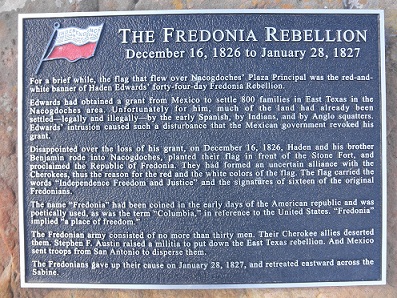
The Fredonia Rebellion Marker on Main St.
The Law of April 6, 1830
The Fredonia Rebellion left the Mexican government and its Texas settlers uneasy and suspicious of one another.[15] As General Mier y Teran made his way back to Mexico, he took note of what he saw, and what he found was that Americans and Europeans outnumbered Mexicans ten to one, and these outsiders were not staying true to their oath of allegiance to Mexico.[16] The result of General Mier y Teran's observances was the passing of the Law of April 6, 1830. This law closed the borders of Texas to immigrants, suspended all land grants, required all trade to be conducted with Mexico, and allowed the Mexican government to collect customs.[17] This law directly contradicted the Constitution of 1824, which gave the state more power than the federal government, and Texans felt that both land and immigrations fell under state power.[18] The reaction of Texans to the Law of April 6, 1830, are called the Disturbances of 1832, is considered the beginning of the Texas Revolution.[19]
Problems began when new officers arrived in Anahuac, Nacogdoches, and Velasco. Colonel Juan Davis Bradburn was appointed to Anahuac and his decision to stop land granting, close some ports, and monitor the rest for customs, resulted in a protest that ended with William B. Travis and Patrick Jack in jail. The Texans met at Turtle Bayou and drafted what is called the Turtle Bayou Resolution, which pledged loyalty to the Constitution of 1824.[20] A few of the men decided to go to Velasco and retrieve a cannon to bust their friends out of jail. Colonel Jose de las Piedras of Nacogdoches relieved Bradburn of his position and released the prisoners.[21] The Texans mistook this gesture to mean that Piedras was on their side, but they were mistaken; upon returning to Nacogdoches, Piedras ordered everyone to turn in their guns.[22]
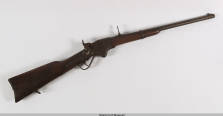
Spencer Repeating Rifle
The Battle of Nacogdoches
Instead of bringing their weapons into town to turn them in to Piedras, Texans came to town to fight. Starting on August 2, 1832, the Battle of Nacogdoches took place over the course of two days in downtown Nacogdoches.[23] Local men from Ayish Bayou in San Augustine, Neches County, Shelby County, and Sabine County met at the home of Adolphus Sterne, and he informed them of barricades and fortifications in the Stone House, the church, and the Red House. As the Texans gained ground, Piedras fled to the Angelina River where he was captured and forced to surrender, putting an end to the battle.[24]
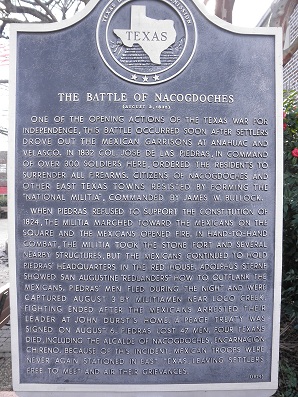
Battle of Nacogdoches Historical Marker
The Texas Revolution and Nacogdoches
In October of 1832, Texans held a convention at San Felipe de Austin where they again pledged their loyalty to the Constitution of 1824 and requested that Texas become its own state within Mexico.[25] In spite of their attempts to cooperate, the Texans did not realize how angry the Mexican government was with the settlers. In 1833 the Texans met again, renewing their sentiments again, and this time drafted a state constitution in hopes that the Mexican government would see that the Texans were taking their request seriously and remained loyal to the Mexican government.[26] Stephen F. Austin, a trusted and loyal Mexican subject, took this draft of the Texas Constitution to Mexico City and was abruptly arrested for his impertinence.[27] Although Austin had always championed peace between Texans and their Mexican government, when he was released from prison two years later, he was ready for a fight.
Though none of the battles of the Texas Revolution took place in Nacogdoches, citizens of Nacogdoches still held an important part in the struggle. Prior to battle, Sam Houston and Adolphus Sterne signed a treaty, in the front parlor of Sterne's home, to prevent war with the tribes while Texans were fighting Mexican forces.[28]
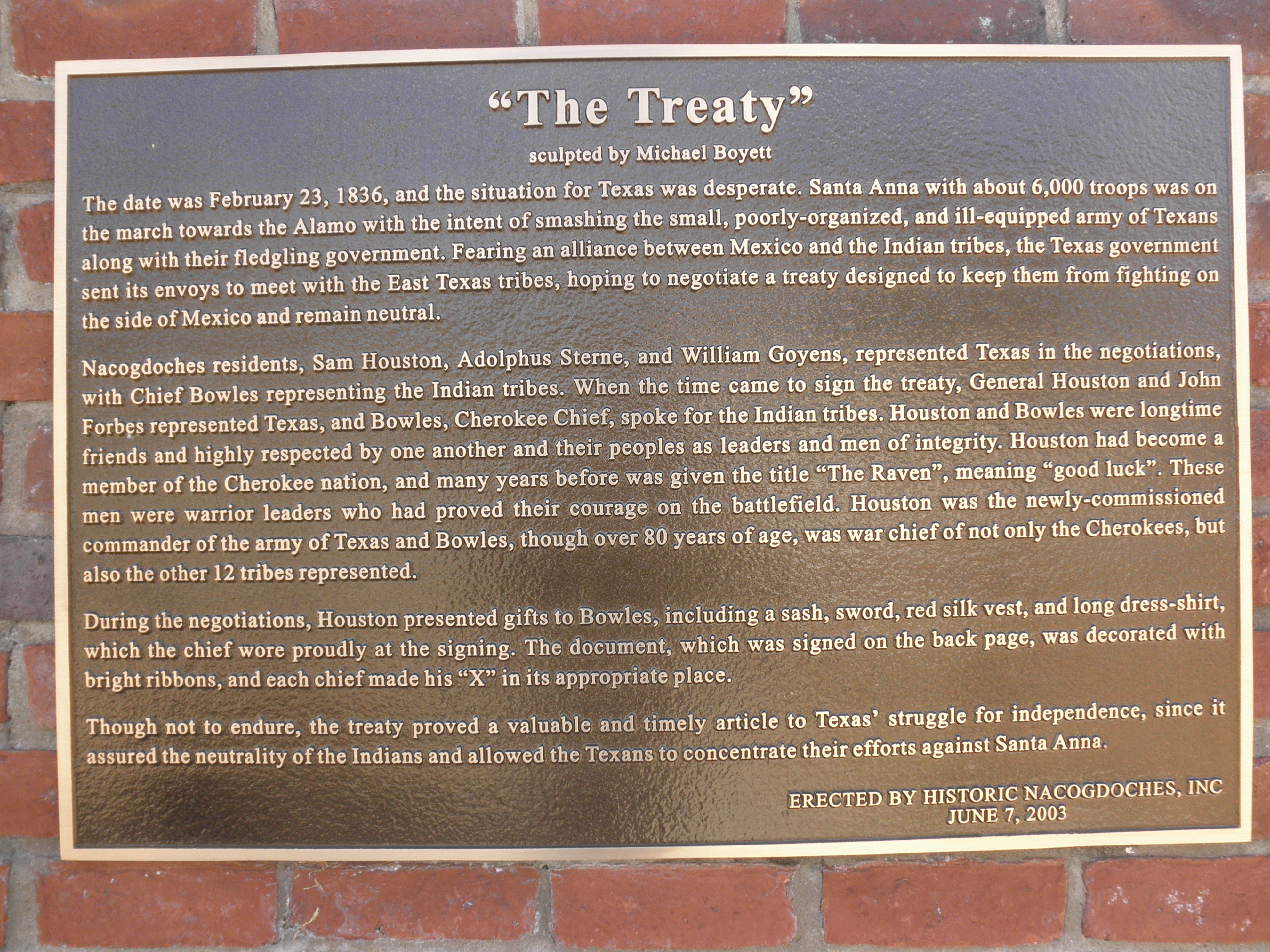
"The Treaty" plaque at Eugenia Sterne Park
Locals Thomas J. Rusk, Charles Taylor, John S. Roberts, and Robert Potter were elected to the meeting of the provisional government on March 1, 1836, where Rusk was elected Secretary of War and later served as leader of the Texan Army at San Jacinto after Sam Houston was wounded.[29] Though Adolphus Sterne could not fight in the war due to prior troubles with the law, he smuggled weapons and ammunition into Texas from America and organized a company of volunteers from New Orleans, the New Orleans Greys, who fought in the Alamo and Goliad.[30] Men from Nacogdoches fought in all of the major battles of the Texas Revolution- San Antonio, Goliad, the Alamo, and San Jacinto. Captain Haden Arnold led a company from Nacogdoches in the Battle of San Jacinto.[31] Nacogdoches also served as a safe haven for those retreating from the Mexican army in the Runaway Scrape of March and April of 1836.
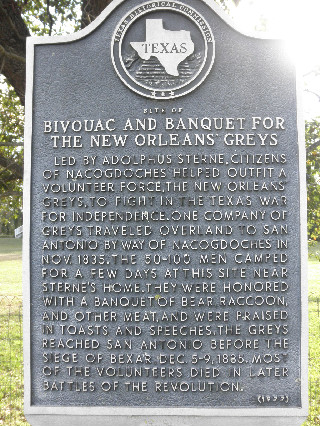
Historical marker for the Bivouac and Banquet for the New Orleans Greys
In 1936, the State of Texas erected granite memorials for those who fought in the Texas Revolution and participants in the republic's government, individuals who received markers include John S. Roberts, Charles Standfield Taylor, William Clark Jr., Elias E. Hamilton, Thomas Young Buford, Haden Edwards, Hayden Arnold, and Kelsey Harris Douglass. (Thomas J. Rusk and Dr. Robert Irion have different markers) To locate these individuals' graves in Oak Grove Cemetery, visit www.preserveamerica.sfasu.edu/OakGrove and enter their name into the search criteria.
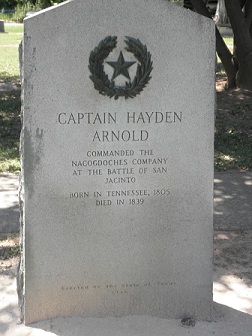
Hayden Arnold's State of Texas Memorial
Images
- "Texas State Flag," Maryland Nautical, http://mdnautical.com/state/1931-texas-state-flag.html .
- Stone Fort, Photograph Collection 1890-1899, East Texas Research Center, Stephen F. Austin State University, Nacogdoches, Texas.
- The Fredonia Rebellion Marker, 206 East Main Street, Nacogdoches, Texas, http://digital.sfasu.edu/cdm/ref/collection/EastTexRC/id/21 .
- Spencer Repeating Rifle, Stone Fort Museum, East Texas Research Center, Stephen F. Austin State University, Nacogdoches, Texas.
- Battle of Nacogdoches Historical Marker, 206 East Main Street, Nacogdoches, Texas, http://digital.sfasu.edu/cdm/ref/collection/StoneFort/id/237 .
- "The Treaty" plaque at Eugenia Sterne Park, 700 East Main Street, Nacogdoches, Texas.
- Historical Marker for the Bivouac and Banquet for the New Orleans Greys, Across from Eugenia Sterne Park on Pillar Street, Nacogdoches, Texas.
- Captain Hayden Arnold's Gravemarker, Oak Grove Cemetery, Nacogdoches, Texas.
References